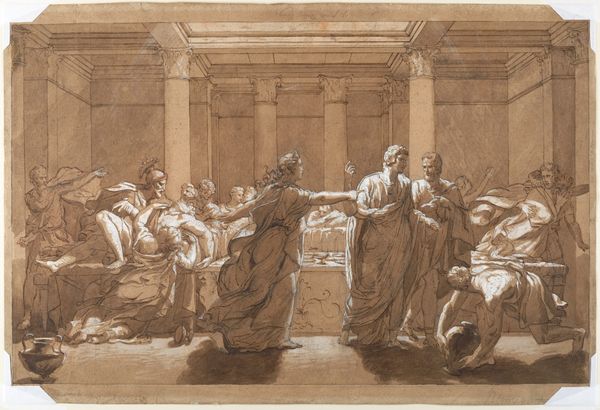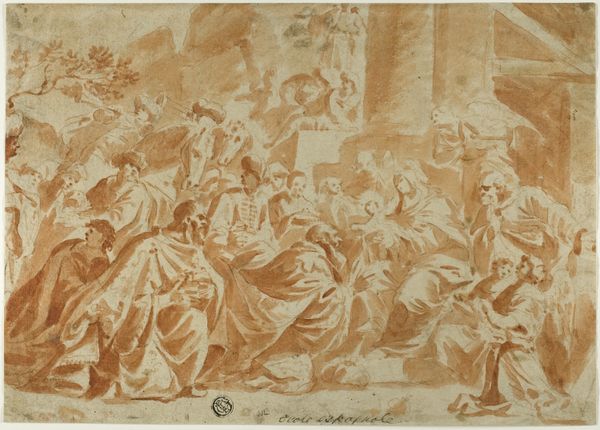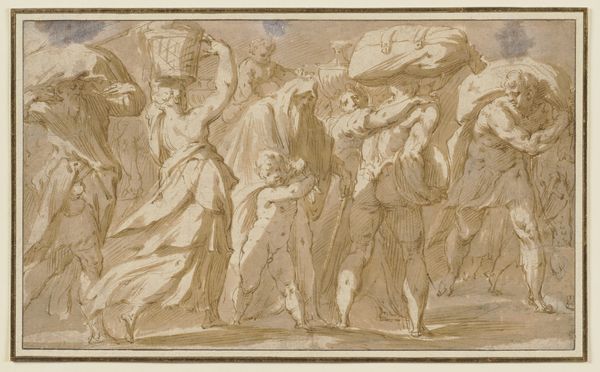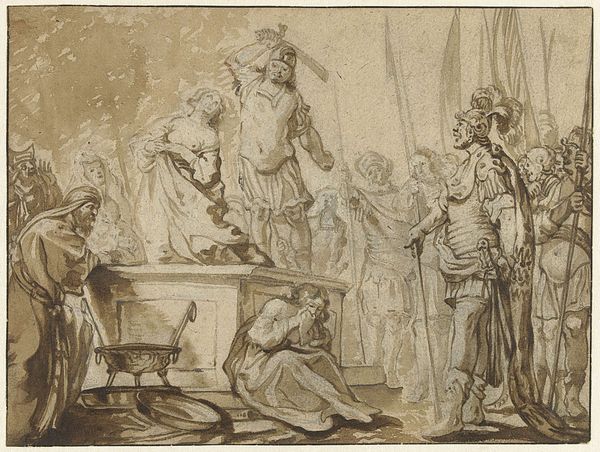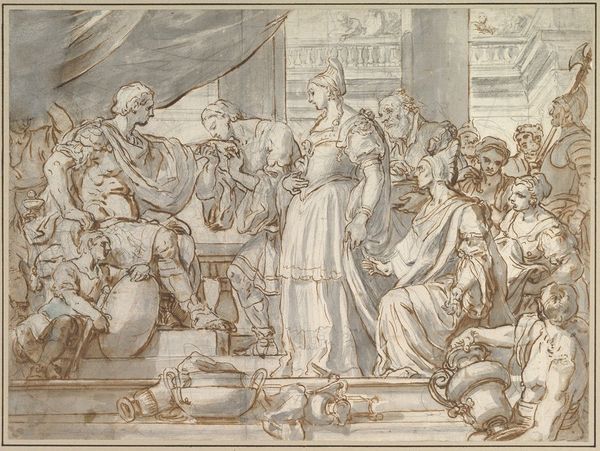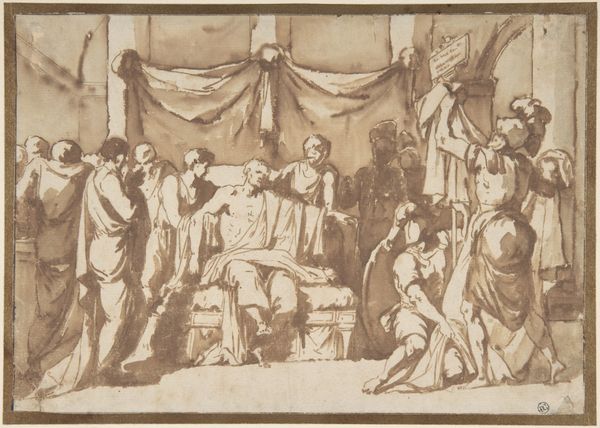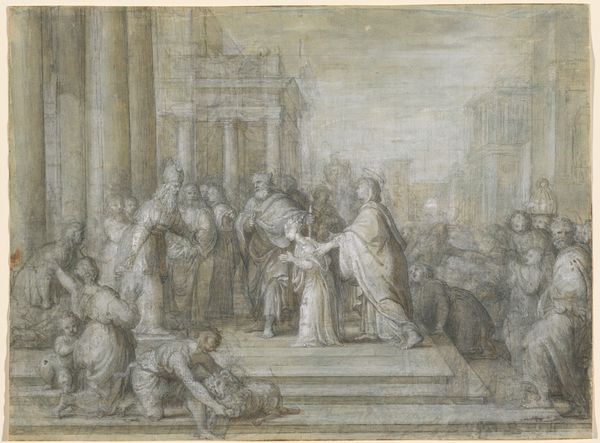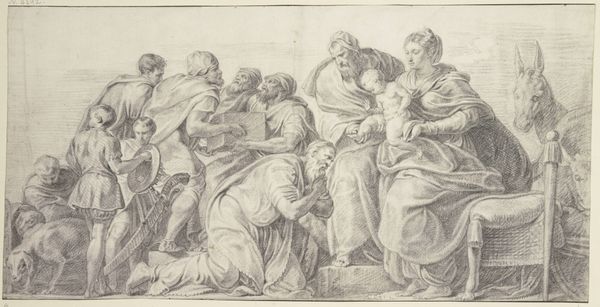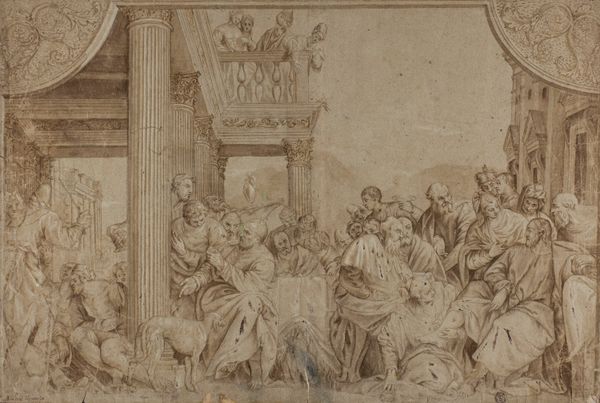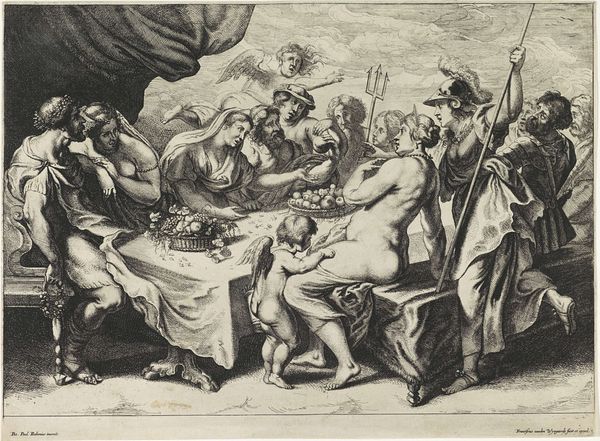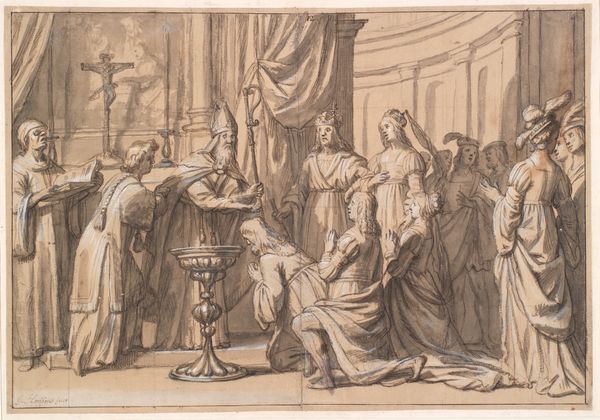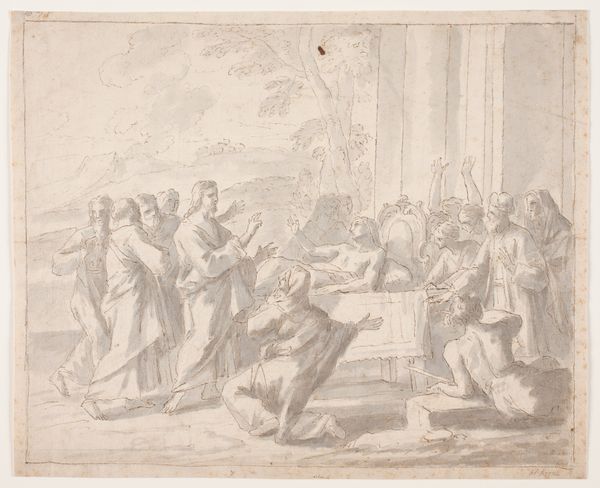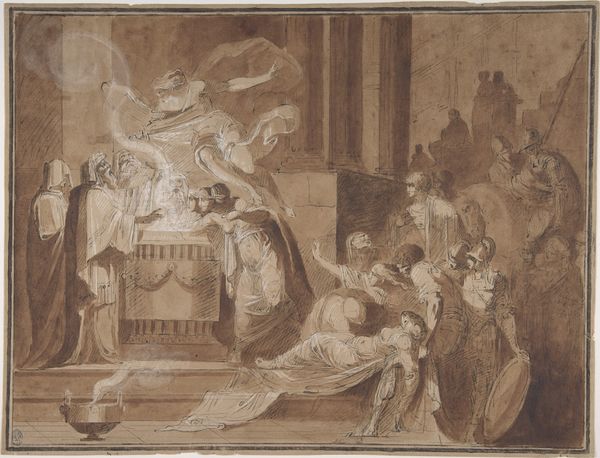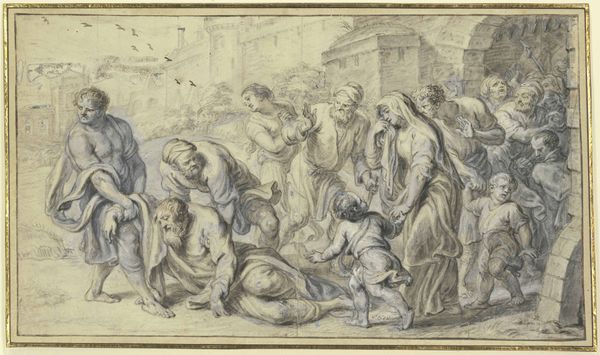
Dimensions: support: 714 x 1045 mm
Copyright: CC-BY-NC-ND 4.0 DEED, Photo: Tate
Editor: This is John Singleton Copley’s Study for ‘The Collapse of the Earl of Chatham’. I’m immediately struck by the somber mood and the sheer number of figures crammed into the composition. What visual cues or symbolic meanings stand out to you? Curator: Notice how all eyes are directed towards Chatham. The dramatic lighting focuses our attention, highlighting his vulnerability. What might the symbolism of a leader collapsing in such a public space suggest about the fragility of power? Editor: It's like a snapshot of a pivotal moment, making the viewer feel like a witness. Curator: Precisely. And consider how Copley uses historical accuracy to lend gravitas. The event becomes a symbolic representation of shifting political landscapes. Do you see how the careful rendering of clothing and setting grounds the emotional impact? Editor: Definitely, it gives the scene weight. I hadn’t considered the clothes having such meaning. Curator: Symbols within images shape our understanding of history. We are, after all, creatures defined by the stories we tell ourselves.
Comments
tate 6 months ago
⋮
http://www.tate.org.uk/art/artworks/copley-study-for-the-collapse-of-the-earl-of-chatham-n01073
Join the conversation
Join millions of artists and users on Artera today and experience the ultimate creative platform.
tate 6 months ago
⋮
This picture and its related work (Tate N01072) are painted sketches made in c.1779 by the Anglo-American artist John Singleton Copley. The studies – rendered in a limited palette of brown, white and black oil paint – were created in preparation for Copley’s monumental history painting The Death of the Earl of Chatham (Tate N00100). They dramatise the collapse of William Pitt, the First Earl of Chatham, at the centre-right, while a crowd of peers in the House of Lords at Westminster, London, looks on. On 7 April 1778 – nearly three years after tensions between Great Britain and its American colonies had devolved into a state of war – the House of Lords debated a resolution to withdraw their troops from the colonies, an act that would have effectively ended the conflict and granted American independence. Chatham, an elder statesman who had presided over the British Cabinet during the Seven Years’ War (1756–63), was sympathetic to the American cause but firmly opposed to this measure. After delivering an impassioned speech on the Floor of the House, Chatham suddenly fell unconscious, dying a month later.

